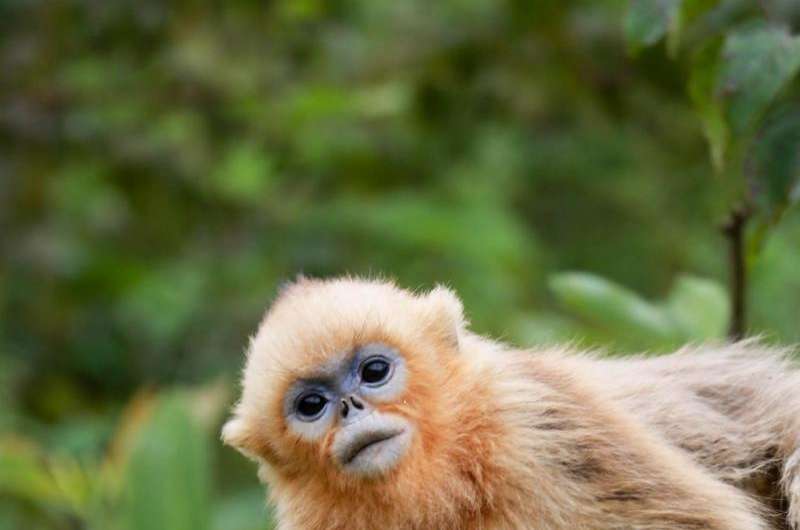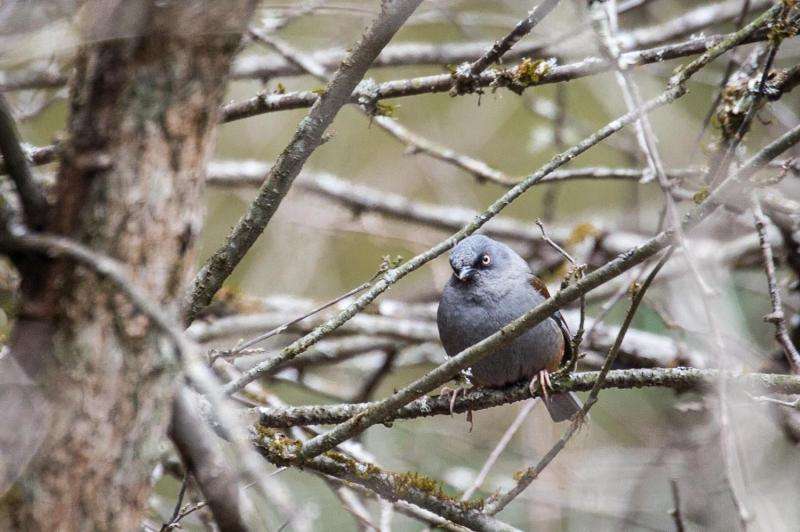Panda preserves providing habitat for other endangered, threatened species

Chinese conservation measures to protect the charismatic giant panda in the wild have also benefitted other threatened species, including birds, mammals and amphibians, according to new Duke University-led study.
"China has spectacular protected areas with exceptional numbers of species found nowhere else on Earth," said Stuart L. Pimm, Doris Duke Professor of Conservation Ecology at Duke. "The giant panda is the most famous of these—a global conservation icon. We wanted to know whether it serves as a protective umbrella for other species. We found that the giant panda's geographical range overlaps with 70 percent of forest bird species, 70 percent of forest mammals, and 31 percent of forest amphibian species found only in mainland China."
But the study also identifies other high-priority species and conservation areas that have so far been neglected.
"There are gaps in the coverage of some species," said Binbin Li, the paper's lead author and a Ph.D. student working with Pimm. "Our study provides recommendations for which other areas in China should be set aside to protect species most effectively and efficiently."
Li and Pimm published their study Sept. 16 in the journal Conservation Biology.
Li works in nature preserves in the Min Shan Mountains of Sichuan, China, helping park authorities there manage the park to protect pandas.

To conduct their new study, she and Pimm created a comprehensive database of species distributions, based on maps compiled by hundreds of naturalists, that show where species of amphibians, birds and mammals occur in China. Of particular interest were those species that live only in China.
"These endemic species have small geographical ranges and they tend to be the ones at greatest risk of extinction," Pimm said.
The maps showed that most of these native species were concentrated in the mountains of southwestern China, especially in the province of Sichuan—exactly the places where the panda now survives, and where many nature preserves have been established to protect them.
"Many people have worried that in protecting the giant panda, we might be neglecting other species, but this isn't the case," Li said.
Using geospatial analysis and statistical modeling, she and Pimm created a new map that predicted the locations within the mountainous region where each endemic species could best survive. Using remote sensing, they then identified specific areas and elevations where vital forest habitat remained, and overlaid this information onto a map of existing nature preserves.

This final map provided very specific predictions of which locations offered protection to the greatest number of species in addition to giant pandas. It also identified "gap species"—those that live in areas currently not set aside to protect pandas. Sometimes these areas were not protected at all; sometimes they were protected but not given the highest level of protection in the Chinese system.
Li and Pimm's study makes specific recommendations for how to improve protection of these species and their habitats.
"There is great hope in the future," Li said. "While the government and the public keep focusing on pandas, it is easier to establish new protected areas and corridors in this region. It gives us the chance to protect the most important areas for other native species while protecting more panda habitats."
"China has rapidly increased the areas it protects for wildlife, and the facilities of many nature reserves are impressive," Pimm said. "Many more Chinese and international visitors are going to these areas, testifying to the appeal of their scenery and wildlife. China also supports international conventions committed to expanding protected areas. We hope the results of our work will help both regional and national authorities select the best areas for a wide variety of China's species."
More information: "China's Endemic Vertebrates Sheltering under the Protective Umbrella of the Giant Panda," Binbin V. Li and Stuart L. Pimm, Sept. 16, 2015, Conservation Biology. DOI: 10.1111/cobi.12618
Journal information: Conservation Biology
Provided by Duke University



















